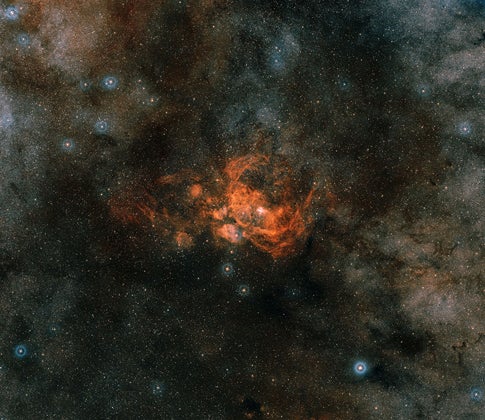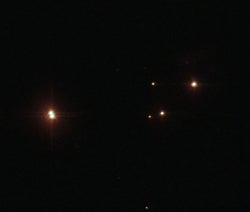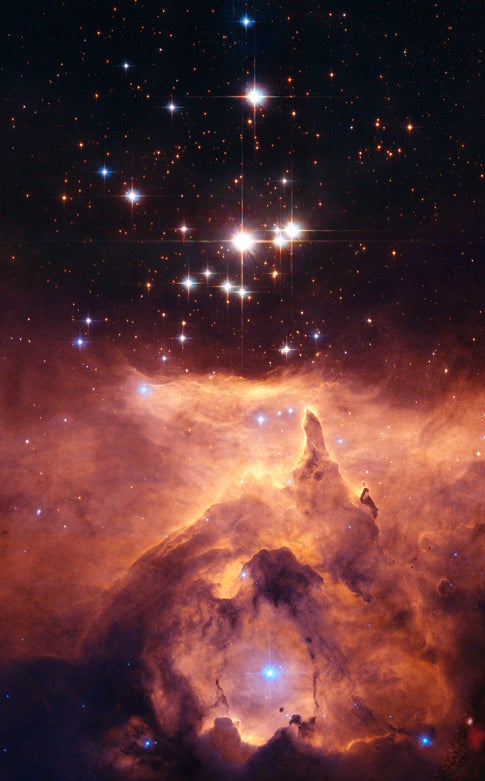The small open star cluster Pismis 24 lies in the core of the large emission nebula NGC 6357 in Scorpius, about 8,000 light-years away from Earth. Some of the stars in this cluster are extremely massive and emit intense ultraviolet radiation.
The brightest object in the picture is designated Pismis 24-1. It was once thought to weigh as much as 200 to 300 solar masses. This would not only have made it by far the most massive known star in the galaxy, but would have put it considerably above the currently believed upper mass limit of about 150 solar masses for individual stars.
However, Hubble Space Telescope high-resolution images of the star show that it is really two stars orbiting one another. They are estimated to each be 100 solar masses.
In addition, spectroscopic observations with ground-based telescopes further reveal that one of the stars is actually a tight binary that is too compact to be resolved even by Hubble. This divides the estimated mass for Pismis 24-1 among the three stars. Although the stars are still among the heaviest known, the mass limit has not been broken thanks to the multiplicity of the system.
The observations were performed by a team of astronomers led by Jesús Maíz Apellániz of the Instituto de Astrofísica de Andalucía in Spain. The team imaged Pismis 24-1 with Hubble’s Advanced Camera for Surveys in April 2006.












